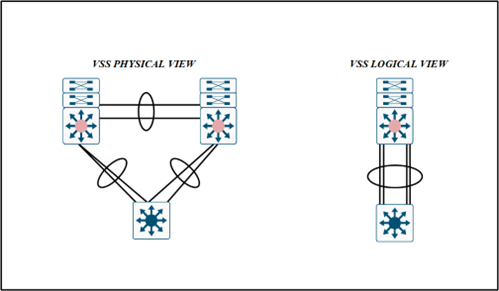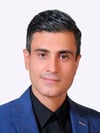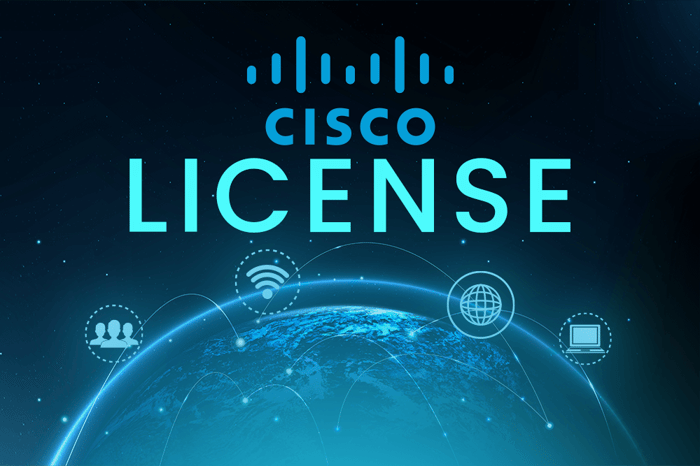You have no items in your shopping cart.

Campus Network Redundancy: A Guide to High Availability
In today’s interconnected world, campus networks must ensure high availability and minimal downtime to maintain smooth operations. Network redundancy is a critical strategy for achieving these goals.
This guide explores key technologies—First Hop Redundancy Protocol (FHRP), Multi-Chassis EtherChannel (MEC), Virtual Switching System (VSS), and StackWise Virtual (SWV)—and offers best practices to help network administrators maximize uptime and resilience.
What is Campus Network Redundancy?
Network redundancy in campus networks ensures that alternative paths and devices are in place to prevent network failures. Redundancy helps ensure high availability and continuous service, even in the event of a device or link failure.
By implementing FHRP, MEC, and VSS, campus networks can create a fault-tolerant architecture capable of handling data traffic without downtime.
FHRP for Campus Networks: Ensuring Gateway Redundancy
First Hop Redundancy Protocol (FHRP) is essential for maintaining reliable gateway connectivity in campus networks.
It allows multiple routers or switches to work together using a virtual gateway address. If one router fails, another takes over, ensuring uninterrupted network communication and preventing downtime. This setup allows Layer 3 devices to share a virtual IP address, maintaining continuity even during device failures.
Types of FHRP Protocols
1. Hot Standby Router Protocol (HSRP): Cisco proprietary protocol offering router redundancy.
- Type: Cisco proprietary.
- How It Works: Multiple routers form an HSRP group, with one active router and others on standby. A virtual IP address is used as the default gateway for hosts.
- Versions: HSRP Version 1 (with IPv4 support) and HSRP Version 2 (with enhanced features like IPv6 support).
2. Virtual Router Redundancy Protocol (VRRP): Open-standard protocol used for redundancy across multiple vendors.
- Type: Open standard (RFC 5798).
- How It Works: Routers in a VRRP group share a virtual IP address as the default gateway. The master router forwards traffic; if it fails, a backup router takes over.
3. Gateway Load Balancing Protocol (GLBP): A Cisco protocol providing both redundancy and load balancing.
- Type: Cisco proprietary.
- How It Works: GLBP allows multiple routers to share the forwarding load. It uses a virtual IP and multiple virtual MAC addresses to distribute traffic across all available routers, balancing the load while providing redundancy.
Importance of FHRP in Networks
FHRP protocols ensure network reliability, particularly in enterprise environments where downtime can lead to significant disruptions. These protocols provide seamless failover and, in some cases, load balancing, maintaining continuous network availability and optimal performance.
Protocols like HSRP, VRRP, and GLBP support redundancy by allowing a backup router to take over if the primary router fails.
For load distribution, HSRP and VRRP can be configured to assign one distribution switch to handle odd VLANs and the other for even VLANs. GLBP offers better uplink utilization but is limited to loop-free topologies.
| Feature | HSRP | VRRP | GLBP |
| Vendor | Cisco proprietary | Open standard | Cisco proprietary |
| Failover Time | 3-10 sec | 3 sec (configurable) | 30 sec (default) |
| Load Balancing | No | No | Yes |
| Multicast Address | 224.0.0.2 | 224.0.0.18 | 224.0.0.105 |
| Priority Range | 0-255 | 1-254 | 1-255 |
| Preemption | Yes | Yes | Yes |
| Active Router | 1 Active, 1 Standby | 1 Active, 1 Backup | Up to 4 Active |
| Default Priority | 100 | 100 | 100 |
| Virtual IP & MAC | One virtual IP address and one virtual MAC address | One virtual IP or actual IP address from a router and one virtual MAC | One virtual IP or actual IP address from a router and one virtual MAC |
Multi-Chassis EtherChannel (MEC): Aggregating Links for Redundancy
Multi-Chassis EtherChannel (MEC) allows for the aggregation of multiple physical links across two physical switches, creating a single logical connection that enhances both redundancy and performance.
How MEC Works in Campus Networks?
- Logical Link Aggregation:MEC allows links connecting to two physical switches to be bundled into a single logical EtherChannel. In a traditional EtherChannel setup, all links must connect to the same physical switch, but MEC extends this capability across multiple switches.
- Improved Redundancy: If one switch or link fails, traffic is automatically shifted to the remaining active links.
- Spanning Tree Protocol (STP) Optimization: Since MEC operates across multiple physical switches treated as a single logical switch, it minimizes the need for Spanning Tree Protocol to block redundant links, resulting in faster network convergence and more efficient use of available bandwidth.
- To learn more about Spanning Tree Protocol and how to avoid common configuration mistakes, check out this article.
Example Scenario
Imagine you have two Distributed switches configured as a VSS or StackWise Virtual pair. These Distributed switches connect to access layer switches via multiple links. With MEC, you can bundle links from both Distributed switches to the access switch into a single logical EtherChannel.
The access switch perceives these links as a single connection, even though they physically connect to two different switches. If one core switch fails, the other Distributed switch takes over without disrupting the network.
Key Benefits of MEC
- High Availability: Ensures network continuity even if a switch or link fails.
- Increased Bandwidth: Aggregates multiple links for higher throughput.
- Load Balancing: Distributes traffic across all links in the EtherChannel.
- Simplified Network Design: Reducing blocked links eliminates the need for complex STP configurations.
Virtual Switching System (VSS)
VSS is a technology developed by Cisco that is primarily used in large campus and data center environments to improve network resilience, streamline network management, and boost throughput.
VSS allows two physical Cisco Catalyst switches to be combined into a single logical virtual switch. This setup enables the two physical switches to function as one unit, providing redundancy, easier management, and greater bandwidth.
Key Features of VSS:
- Single Management Point: The two switches in a VSS are managed as a single entity, reducing the complexity of network management.
- Redundancy and High Availability: By combining two physical switches, VSS ensures that if one switch fails, the other continues to operate without disrupting network services.
- Increased Bandwidth: VSS utilizes multi-chassis EtherChannel (MEC) to aggregate links from both switches, providing increased bandwidth and load balancing across multiple links.
- Simplified Spanning Tree: VSS eliminates the need for Spanning Tree Protocol (STP) between the two switches, reduces convergence time, and prevents network loops.
Use Cases:
VSS is commonly deployed in the core and distribution layers of large campus networks or data centers, where high availability and simplified management are essential.

StackWise Virtual (SWV)
SWV is a Cisco technology mainly utilized with Cisco Catalyst 9000 series switches. Unlike VSS, SWV enables two physical switches to function as a single logical unit. However, it is tailored for newer switch models and provides added flexibility and scalability.
Key Features of SWV:
- Unified Control Plane: Like VSS, StackWise Virtual combines two switches into a single logical switch with a unified control and management plane.
- Redundancy and High Availability: SWV ensures minimal downtime by offering fast failover capabilities in case one switch fails.
- Link Aggregation: SWV utilizes Virtual Link Aggregation (VSL) to merge links from both switches, increasing overall throughput and enabling load balancing.
- Flexible Deployment: SWV is often easier to deploy and configure than traditional VSS, especially in newer Catalyst 9000 series networks.
Use Cases:
StackWise Virtual is ideal for campus environments requiring high performance and redundancy with minimal complexity. It is often used in network distribution and core layers, which are vital to simplicity, scalability, and high availability.

VSS vs. SWV: Choosing the Right Technology
VSS: Suitable for legacy Cisco Catalyst platforms like the 4500 and 6500 series.
SWV: Designed for the newer Catalyst 9000 series and offers easier deployment.
| Feature | VSS (Virtual Switching System) | SWV (StackWise Virtual) |
| Supported Platforms | Catalyst 4500, 6500, 6800 series | Catalyst 9400, 9500 series |
| Deployment Complexity | More complex to configure | It is simpler and more accessible to deploy |
| Scalability | Focused on two-switch setups | Supports two-switch setups with modern enhancements |
| Stacking Technology | Uses VSL (no traditional stack cables) | Incorporates StackWise technology with VSL |
| Software and Licensing | Requires specific older software versions | Runs on Cisco IOS XE with modern capabilities |
| Convergence and Failover | Reliable but with slightly slower failover | Faster convergence and failover |
| Spanning Tree Integration | Simplified STP with a single logical switch | Improved STP handling with more optimizations |
Best Practices for Campus Network Redundancy
- Deploy FHRP Protocols: Ensure that gateway redundancy is in place using HSRP, VRRP, or GLBP.
- Leverage MEC for Redundant Links: Use Multi-Chassis EtherChannel to create redundant, high-bandwidth connections.
- Adopt Cloud-Based Solutions: Implement cloud-based disaster recovery strategies.
- Simplify Management with VSS or SWV: Combine switches into a single logical entity to streamline network management.
Campus Network Redundancy: Key Takeaways
Network redundancy is essential for ensuring high availability and resilience in campus environments.
By implementing technologies such as FHRP, MEC, VSS, and SWV, network administrators can minimize downtime, enhance network performance, and provide a reliable infrastructure for students and staff alike.
Whether using traditional redundancy methods or adopting advanced techniques like SDN and cloud-based solutions, campuses can achieve a robust and fault-tolerant network.






